Close to half of the population will experience neck pain in their lifetime [15]. Poor posture is the number 1 cause of neck pain [4].
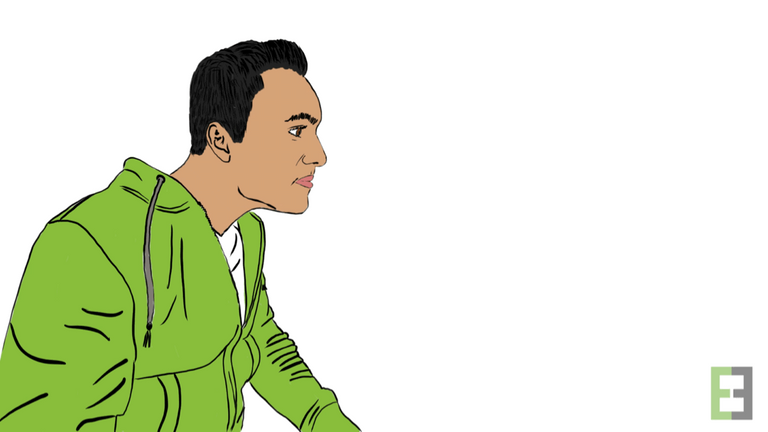
In part 1 of this series, I explained how gravity has a language which we are meant to understand. The loss of communication has caused a disconnected relationship, to the point where gravity hurts us physically.
In today’s episode, I will focus specifically on the head and neck.
As you all know, the head rests on the neck (cervical spine) and rib cage. When stacked directly on top of one another, these structures are balanced. If the head moves off axis, the supporting structures get involved in preventing the head from falling off of the body. With gravitational force at play, the head bears more weight on the structures, the further it moves away from the midline [6]. The exact weights were measured in a lab. When the head was at 15, 30, 45 and 60 degrees off axis, the pressure on the neck measured at 27, 40, 49 and 60lb respectively [14]. To think that a neatly stacked head only imparts a load of 10-12lb on the neck!!
The most common off-axis position assumed, is the Forward Head Position (FHP), affecting more than 66% of the population [7].Normal vs. Forward Head Position (FHP):
The cervical spine (neck) is supposed to have a natural lordotic curve. A geometric circle is used to represent proper alignment [8] [9]. A forward head position straightens out the natural curve. Often coupled with the FHP is flexion of the neck. The combination puts the spine into a Kyphotic curve, which is opposite to its natural shape. Students and office workers spend a lot of time in this position, due to sitting and working [3]. Physical therapists recommend a neutral or even extended neck position as opposed to flexed [5].
The implications of a FHP:
Quick fact: The spinal chord, part of the Central Nervous System, runs through the center of the spine.
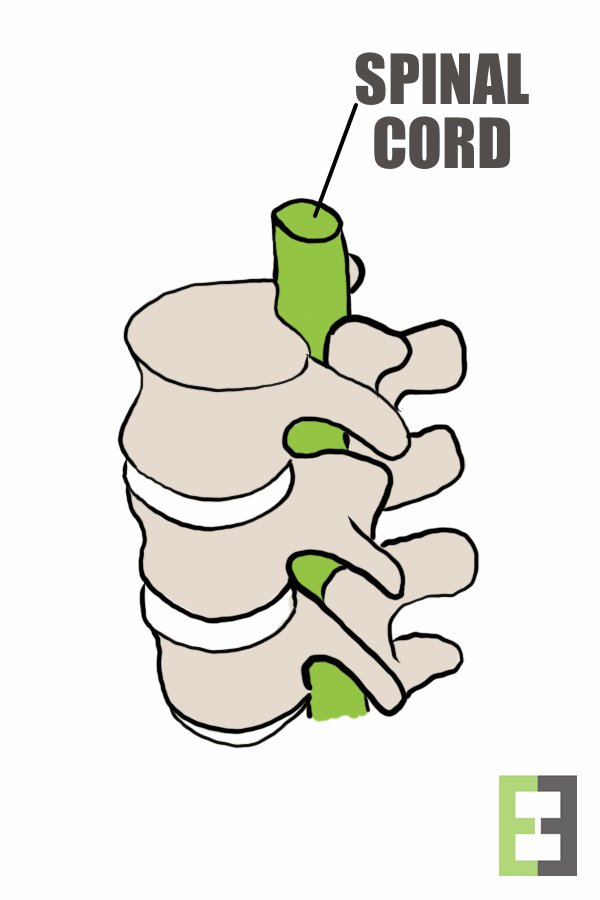
Spinal Cord
When the neck spends too much time static or in a kyphosis, it causes narrowing of the spinal cord, known as the Poisson's Effect [8]. The reduced space increases the internal pressure, which makes blood flow in the area more difficult.
Up to 40% less blood flows in the spine during flexion [8]!!
If compression on the chord continues over an extended period, myelin in the nerves starts breaking down, which leads to a loss of signaling to the body. Without secure communication, a whole host of issues could arise, from muscle weakness to autoimmune diseases like multiple sclerosis [8].
Muscles and breathing
Quick fact:The neck contributes to the highest rates of muscular skeletal pain [4].

This is why the associated symptoms with prolonged FHP are: Muscle tension headaches/ migraines and upper cross-syndrome [4] [7]. The correlation between neck pain and FHP is evident.
The scalenes are Muscles situated on the sides and front of the neck. They help bend the neck laterally as well as flex forward. Spending long periods of time in a FHP shortens these muscles. Due to their attachments on the first and seconds ribs of the thorax, they will Negatively affect breathing if compressed too much [11].
In a study, 83% of patients with severe neck pain, had altered breathing patterns [13].
The most significant change in breathing function was a 14% drop in Maximum Voluntary Ventilation (The max amount of air passing through the lungs in 1 min). This particular reduction in pulmonary function is very similar to conditions like Parkinson’s and Multiple Sclerosis, and thus should not be taken lightly [13].
Quick fact: The neck position in small children is of greater importance. A study showed how eight-year-old kids have heads Which are almost fully grown (91%), yet, their supporting neck strength is only 50% developed. This massive discrepancy makes young children prone to neck injury [2].
Psychology
People with faulty postures such as the FHP have higher levels of psychological stress [4]. The stress may be due to living with the acute and chronic pains caused by poor positions and injury [7]. Patients suffering from neck pain also have impaired sleep quality [3]. We all know the psychological effects of not sleeping are dire. Sleep deprivation is even used as a form of torture [16].
Causes of a FHP:
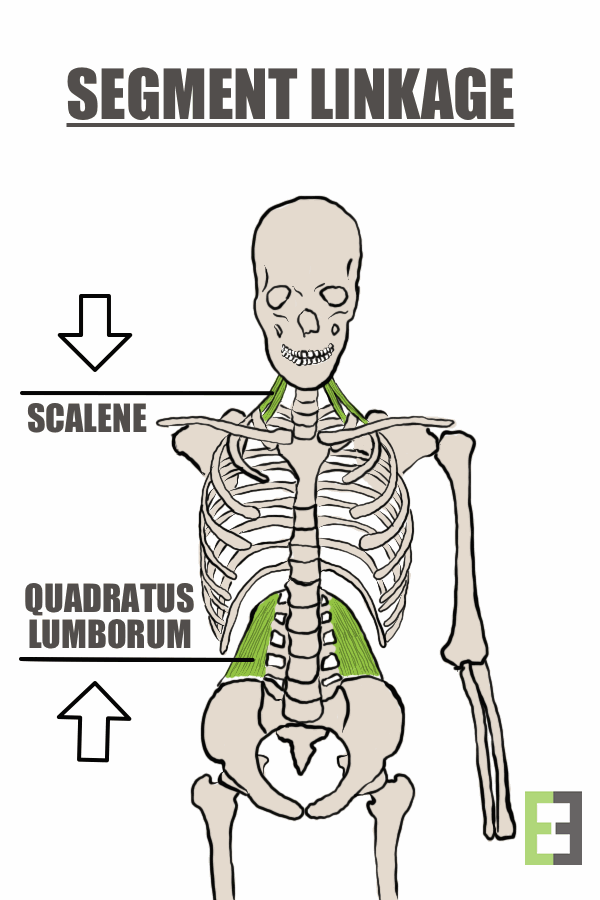
Downstream problems
As mentioned in part 1 of this series, all the segments of the body interlink to one another. A change in one part may cause an effect on other areas too. A testament to this phenomenon is where a shift in pelvis (hip) position can make a change upstream in the neck. For Those who are interested, it is due to the corresponding Quadratus Lumborum and Scalene muscles which attach on either end of the rib cage, from the hip and neck. A contraction on one end alters the position of the other end, like a domino effect. No wonder Sports therapists like Dr. Kelly Starrett emphasize organizing the body from the feet through to the neck before attempting any sporting movement [1]. You cannot be well organized on one end and slack on the other.Another example of this circuit is the connection between the shoulders, thoracic spine (upper back), and neck. There is a direct correlation between rounded shoulders and upper back with a forward head position [6]. The chronic case of this is 'upper cross-syndrome'.
Awareness
Lack of positional consciousness is associated with increased neck pain [6]. One of the reasons could be due to a loss of proprioception through nerve degradation, as explained earlier [8] [12].
A study found that when people are distracted, they are more likely to assume the forward head position [6]. In a world where we are fully engrossed in our computer monitors and mobile phone, this makes total sense.
Fixes for a FHP:
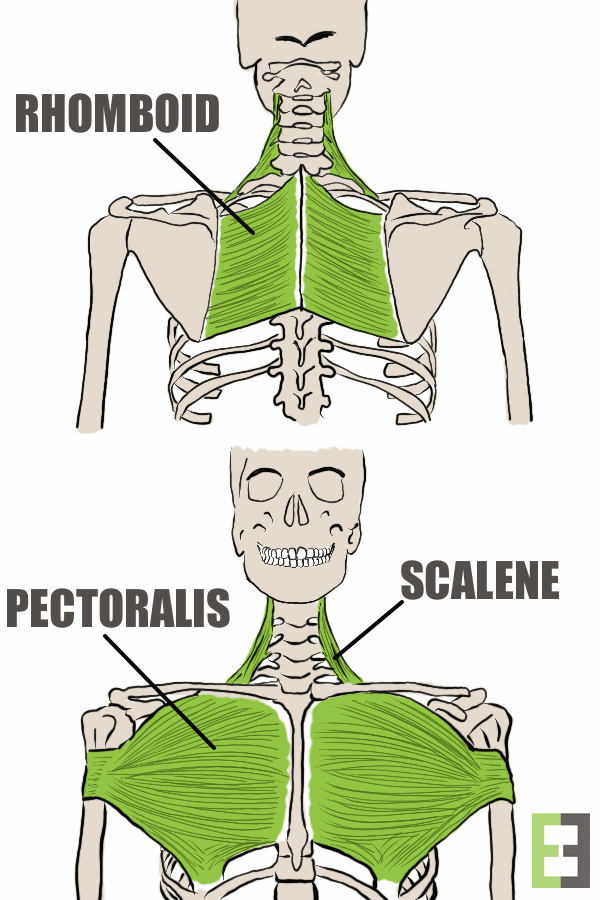
Exercise and stretching
Stretching the scalenes and pectorals will prevent those anterior muscles from pulling the neck and shoulders into the forward, flexed position [7].
Strengthening the rhomboid muscles will also help to retract the shoulders back, taking pressure off of the neck [7].
Proprioception
Balancing exercises are a great way to build awareness of body parts. Balancing light objects, like a ball on the head, will help establish that connection [12] [7].
After some time, more massive objects could be utilized to challenge the balance, and also strengthen all the deep intrinsic muscles [6]. African women have carried baskets and bags on their heads for centuries. The external load forces you to maintain a good posture at all times.
Sleep
Maintaining the normal curvature of the spine during sleep is crucial [10]. The correct usage of a pillow, changes, depending on the sleeping position.
Sleeping on the back requires no use of a pillow to maintain a neutral neck curvature. In fact, the use of too much pillow support may promote a forward head position by flexing the spine.
Sleeping on the side is the most common position [17]. In this case, more pillow support is needed to fill the gap between the shoulder and the head.
Conclusion:
The language we share with gravity is embedded in the natural alignment of our bodily structures. The neck is no exception, especially since it holds up our 'supercomputer'. It's in our best interest to look after this fragile piece of hardware.
Disclaimer
If you are enjoying this series, follow me @exercisinghealth for more.This information is not meant to diagnose or treat any medical conditions. Please consult your doctor if you suffer from neck pain or any other spinal issues.
Biblography:
[9]https://idealspine.com/what-is-cbp/
[10]https://www.ncbi.nlm.nih.gov/pmc/articles/PMC5468189/
*All images were created by @exercisinghealth
[11]https://performancesportswellness.wordpress.com/2013/03/15/muscle-of-the-month-the-scalenes/ [12]https://www.hindawi.com/journals/bmri/2015/689610/ [13]http://journals.sagepub.com/doi/abs/10.1111/j.1468-2982.2008.01787.x [14]http://www.jptrs.org/journal/view.html?doi=10.14474/ptrs.2016.5.2.101 [15]https://www.ncbi.nlm.nih.gov/pmc/articles/PMC3489448/ [16]http://www.optalert.com/news/sleep-deprivation-as-a-form-of-torture [17]https://sleep.org/articles/best-sleep-position/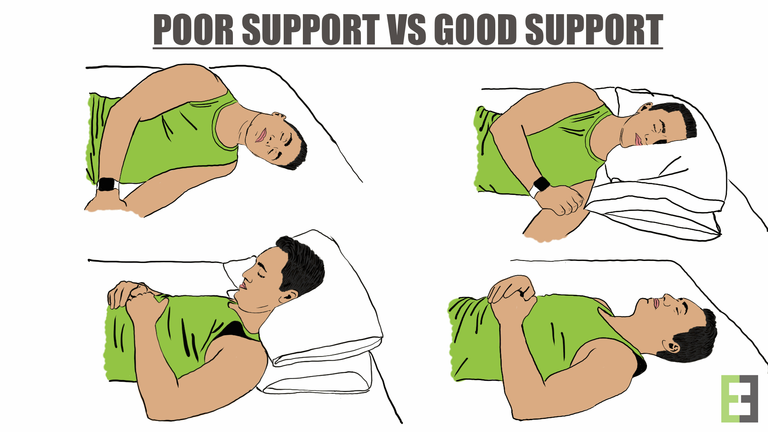
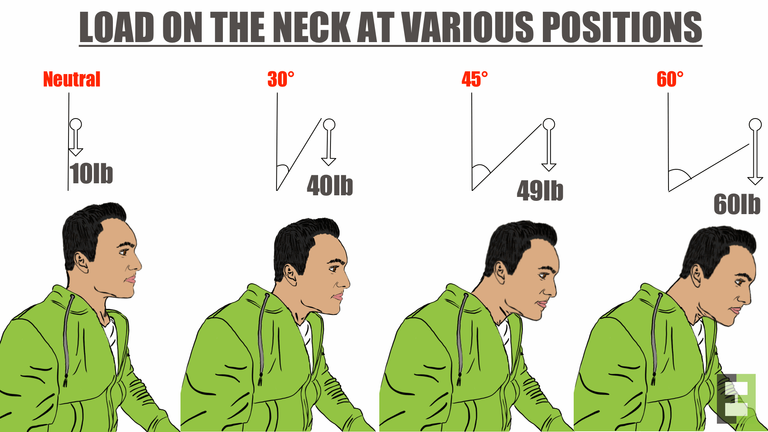
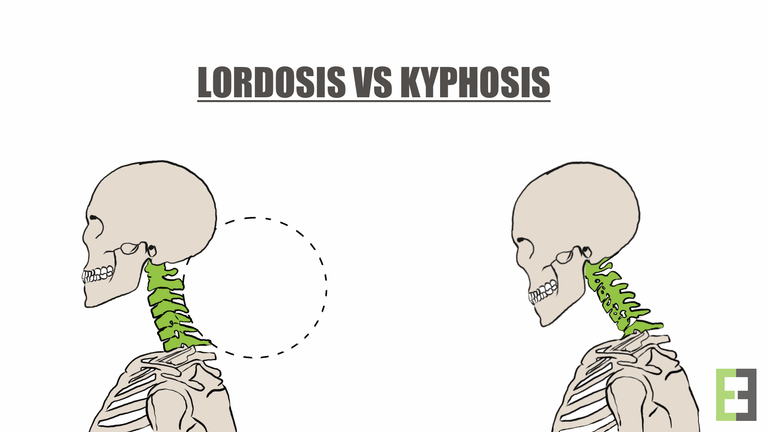
Nice! Have you ever watched the videos from Dr. John Bergman? I have been studying health for many years, and he seems to put it all together. He certainly got me thinking about alignment more. What are your feelings on The Alexander Tech, Rolfing etc...? Anyhow, will be following and hope to see more. New here on Steemit!
I just watched one of his videos. Seems interesting.
Some of my mentors are Dr Stuart Mcgill, Dr Kelly Starrett and Dr Gray Cook. All three of them are extremely well respected in the biomechanics realm. I'm going to one of Dr Mcgill’s seminars in Feb. Very excited!
I think Rolfing, stretching, chiropractic adjustments, soft tissue work etc. All have their place as a short-term intervention. Long-term, it’s way better to figure out how those tissues became tight and restricted in the first place. Removing the cause, eliminates the need to constantly treat the symptom.
Welcome to steemit. Its great to have like minded individuals join the platform.I look forward to interacting with you in the future!
A beatifully made hands on to fix neck issues. Thanks so much.
I am so glad you found the post helpful.
Stay tuned for more in that series
@exercisinghealth
I'm impressed by your talent to illustrate your own posts. I've tried it too but ... well let's just say I'm a better writer than artist!
Thank you! Coming from such a talented creator, your words mean a lot!
Hello @exercisinghealth
This post is so awesome and informative.
This is really interesting, never knew this.
I am definitely guilty of this, i think it'll be important to teach kids proper posture. As most times, we unknowingly assume a wrong posture, that's because that's all we know, no one ever really thought us the right postures.
I'll definitely give this a try. You've done an amazing job with the illustration. Will definitely be checking out your previous posts,
Thanks for sharing!
@melanie00
Hi @melanie00
I am so glad you found value from this post, as it was my hope for everyone while researching and writing it.
Unfortunately, we don't pay enough attention to our movement and postures. I think it is because our need to be 'physical' is of less importance nowadays. I mean who needs to hunt and gather their food anymore.
It's only sports people who pay attention to their movements because I guess they have more incentive to do so.
But the truth is: As long as you live inside a body, we should care. We may not get the short-term benefits like food or money, but in the long term, we can avoid severe pain and discomfort.
It all starts with awareness of how we move and interact with the environment around us. That also means removing obstacles like modern furniture and apparel. The chair, for example, has not only made us more sedentary, But also has broken our relationship with the ground. Now older adults can't even stand up off the ground without support. They lost their capacity through lack of practice. Shoes and tight-fitting clothes have restricted the way we walk and move, all in the name of fashion.
Anyways, I don't mean to be all doom and gloom. Awareness is the conclusion here. So get that ball out and start practising.
Let me know how thing go:)
Definitely!
I really appreciate your efforts in creating awareness! We'll be in touch.
Cheers!
Wow! Very wonderful post. I've been trying to correct my neck posture in a while now but now I think I know how my neck should be...
Thank you
Thank you for your kind words!! I'm so glad you found the information useful.
Such a great post... many of us who work on computers and write have this problem. Looking forward to more posts :)
Yes, unfortunately, its such a common problem these days... Awareness is the first step to improving the situation though. Thanks for your kind words:)
click here.Congratulations @exercisinghealth, this post is the eighth most rewarded post (based on pending payouts) in the last 12 hours written by a Superuser account holder (accounts that hold between 1 and 10 Mega Vests). The total number of posts by Superuser account holders during this period was 960 and the total pending payments to posts in this category was $4638.65. To see the full list of highest paid posts across all accounts categories,
If you do not wish to receive these messages in future, please reply stop to this comment.
Awesome! I'm happy to be one of the lucky ones.
Great post. I was just looking in the mirror the other day and noticed my head is coming forward. I need to start working on this. Glad I found your article. I'll follow along.
I'm so glad you found it useful. Best wishes.
Really enjoyed this. I teach Stand Up Paddle Boarding where the principles and awareness of what I call dynamic functional leverage are rewarded. I also write and draw, love your work!
That is interesting! The optimal and safe position in one sport very often translates the same to other activities. The body structures are the same no matter what you do.
It would be cool if you did a post on posture exercises. Very nice post. 👍
Thank you for your comment😁
I think awareness is critical. It's not often a strength or endurance issue, but, a positional problem. I can, however, make a post with some practical guidance for creating that awareness.
Yea, I agree. I think it would great if you did if, you have the time. Otherwise I can invest some time into it. People who have been using bad postures their whole lives, need a lot more fixing than awareness. Strengthening the middle upper back and neck muscles can fix the issue if it exists, but only temporarily , without proper adjustment to bad habits of course. Let me know what you think about this project, and or if you want to collaborate.
👏👏👏
I’m glad you liked it. Hope to see you during the rest of the series.
Wow this is very informative I enjoyed reading your post !
I'm glad you enjoyed it!